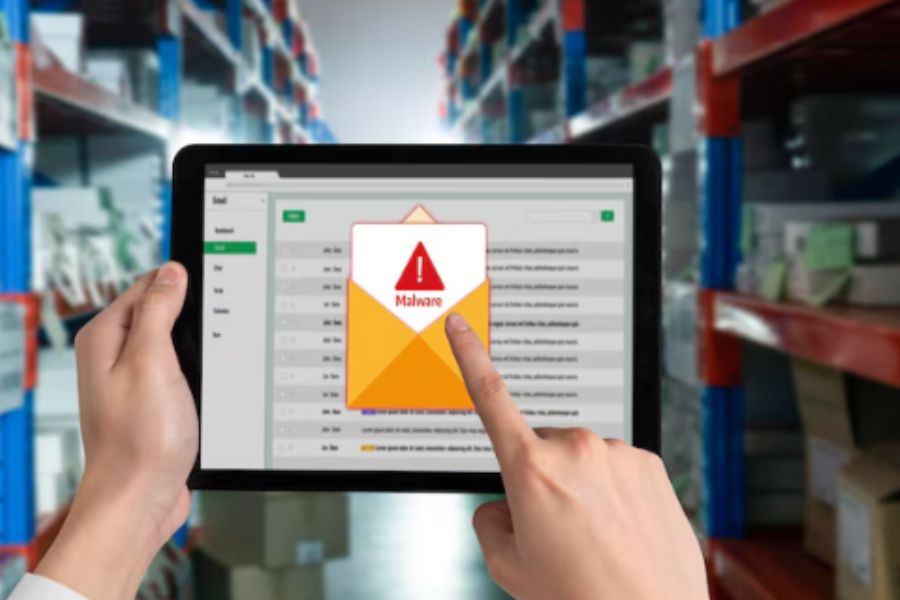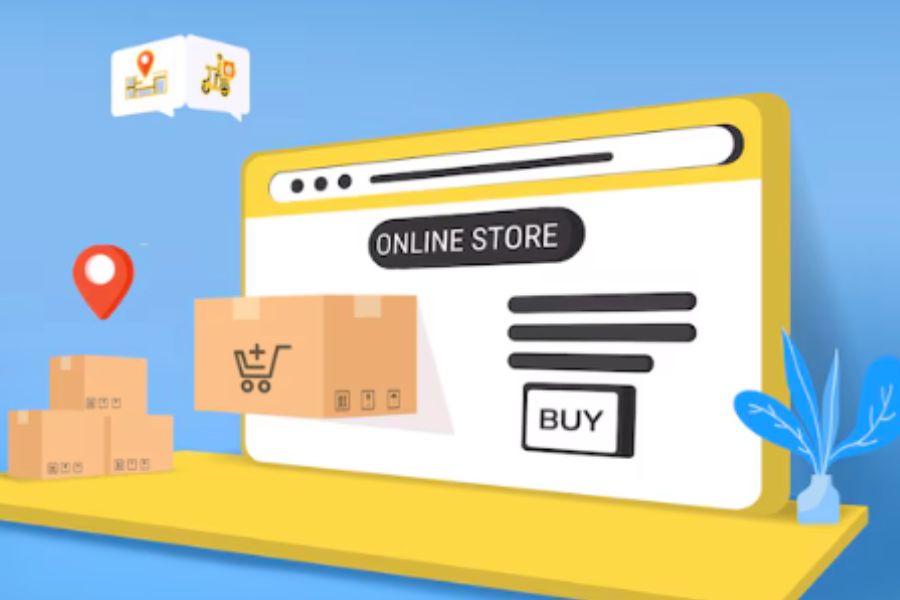In the ever-evolving retail landscape, where customer expectations are soaring, clienteling has emerged as a transformative strategy. Clienteling goes beyond traditional transactions, building personalized relationships that resonate with individual customers. In this article, we delve into the world of this approach, exploring how it harnesses data, technology, and human touch to create a truly personalized retail experience that delights customers.
What is clienteling?
Clienteling is a strategic approach employed by businesses, particularly in the retail and service sectors, to foster strong and personalized relationships with individual customers. At its core, clienteling revolves around understanding the unique preferences, behaviors, and needs of customers on an individual basis. This involves collecting and analyzing data about past purchases, product preferences, sizes, and styles. By harnessing this information, companies can tailor their interactions and offerings to provide a highly personalized shopping experience.
Statistics from Gartner Group reveal that 80% of a company’s future revenue will come from just 20% of its existing customers. In today’s crowded and competitive business arena, customer attrition is a challenge that all companies must face.
Clienteling transcends traditional customer service by focusing on long-term relationship building rather than one-time transactions. It involves proactive engagement through various channels such as email, phone calls, text messages, and even in-person interactions. The ultimate goal is to enhance customer loyalty, boost customer satisfaction, and increase repeat business. Successful clienteling empowers sales associates and customer service representatives to anticipate customer needs, provide relevant product recommendations, and offer exclusive deals that resonate with the customer’s preferences.
In recent years, this sector has been augmented by technological advancements, such as AI-driven insights, predictive analytics, and omni-channel integration. These innovations enable businesses to provide even more personalized experiences across physical stores, online platforms, and social media. As clienteling continues to evolve, it remains a pivotal strategy for companies seeking to differentiate themselves in competitive markets and create lasting emotional connections with their customers.
Recent innovations that are elevating the capabilities of clienteling tools
Recent innovations are revolutionizing the capabilities of clienteling tools, propelling customer relationship management into new realms of effectiveness. As technology continues to evolve, these advancements are reshaping the way businesses interact with their customers and enhancing the overall shopping experience. Here are some of the notable ways in which recent innovations have elevated clienteling tools:
- AI-Powered Insights: Artificial Intelligence (AI) and machine learning have empowered clienteling tools with the ability to analyze vast amounts of customer data quickly and accurately. This enables businesses to gain deeper insights into customer preferences, behaviors, and trends, allowing for even more personalized recommendations and interactions.
- Predictive Analytics: Leveraging AI, clienteling tools can now predict future customer preferences and purchasing patterns. By identifying trends and anticipating needs, businesses can proactively tailor their offerings, enhancing customer satisfaction and driving sales.
- Omni-channel Integration: Modern clienteling tools seamlessly integrate across various channels, including physical stores, online platforms, social media, and mobile apps. This ensures a consistent and personalized experience regardless of where customers engage with the brand.
- Virtual Try-On and Augmented Reality: Innovations such as virtual try-on and augmented reality allow customers to visualize products before purchasing, both online and in-store. This interactive approach enhances the shopping experience and assists customers in making informed decisions.
- Chatbots and Virtual Assistants: As of early 2023, approximately 43% of consumers in the United States said they would prefer to shop mostly online rather than in-store. In response to this evolving trend, intelligent chatbots and virtual assistants step in to provide real-time support and personalized recommendations to customers, even outside of business hours. These tools ensure continuous engagement and assistance, contributing to a heightened sense of customer care.
- Location-Based Services: Geo-targeting and location-based services enable businesses to send personalized offers and notifications to customers’ devices when they are in proximity to a store. This fosters a sense of immediacy and relevance, encouraging in-store visits.
- Personal Data Protection: With increased focus on data privacy, recent innovations have also centered around ensuring the security and ethical use of customer data within clienteling practices. This helps build trust and reinforces the brand’s commitment to safeguarding customer information.
- Feedback Integration: Advanced clienteling tools facilitate direct feedback collection from customers, enabling brands to fine-tune their offerings based on real-time input. This iterative approach contributes to continuous improvement and aligns products and services with customer preferences.
- Seamless Purchasing: Integrating clienteling tools with digital payment solutions streamlines the purchasing process. Customers can complete transactions effortlessly, whether they’re online, in-store, or using mobile devices.
Overall, recent innovations are expanding the horizons of clienteling tools, enabling businesses to forge deeper connections with customers and provide more meaningful, personalized experiences. As these tools continue to evolve, they will likely play an increasingly pivotal role in shaping the future of customer relationship management.
Key elements that establish the effectiveness of clienteling tools, aiming to amplify customer satisfaction
The effectiveness of clienteling tools hinges on several key elements that collectively enhance customer satisfaction, ensuring a personalized and seamless shopping journey:
User-Friendly Interface for Enhanced Experience
A user-friendly interface lies at the heart of effective clienteling tools. Intuitive navigation and clear presentation of customer data empower sales associates to quickly access and utilize relevant information, enabling them to engage customers with confidence and efficiency.
Integrated Data for Cohesion
Centralized and integrated customer data is paramount. A unified view of customers’ purchase history, preferences, and interactions across various touchpoints allows sales teams to offer consistent and relevant recommendations, regardless of the channel through which customers engage.
Seamless Integration Simplified
In a world where customers engage with brands across multiple platforms, the seamless integration of clienteling tools is paramount. Consistency is key, ensuring that customers receive a unified experience whether they’re shopping online, visiting a physical store, or interacting on social media. This integration enhances the overall shopping journey and strengthens customer-brand relationships.
Customized In-Store Experiences Tailored to Individuals
Effective clienteling tools empower sales associates to create tailored in-store experiences. When armed with personalized information, associates can offer recommendations, product demonstrations, and assistance that align precisely with the customer’s preferences and needs.
Engaging Customers Across Multiple Channels
Clienteling extends beyond face-to-face interactions. By engaging customers across multiple channels such as email, social media, and mobile apps, businesses can maintain a continuous connection. Valuable insights, targeted promotions, and ongoing support can be provided through the customer’s preferred channels, enhancing engagement and loyalty.
Adaptability and Versatility
The dynamism of clienteling tools is pivotal. Retail landscapes evolve, customer preferences shift, and technology advances. Effective clienteling tools should be adaptable to these changes, ensuring that interactions remain relevant and impactful over time. This adaptability guarantees the longevity and effectiveness of the clienteling strategy.
Incorporating these key elements into clienteling strategies transforms customer interactions into meaningful and personalized experiences. By leveraging data-driven insights, seamless integration, and adaptable tools, businesses can cultivate loyalty, drive sales growth, and establish lasting relationships with their customers. As the retail landscape continues to evolve, successful clienteling remains a cornerstone for enhancing customer satisfaction and overall business success.
Retail clienteling can improve sales from customer experience improvement
In the rapidly evolving landscape of retail, where competition is fierce and customer expectations are constantly on the rise, businesses are increasingly turning towards innovative strategies to drive sales growth. One such strategy that has gained significant traction is retail clienteling – a personalized approach to customer service that focuses on building strong relationships, fostering loyalty, and ultimately, improving sales through an enhanced customer experience.
At its core, retail clienteling revolves around the idea of treating each customer as a unique individual with distinct preferences and needs. This approach goes beyond the traditional transactional model of retail, where customers are viewed merely as sources of revenue. Instead, it aims to create meaningful interactions that cater to the individual’s tastes and requirements, fostering a sense of connection and loyalty.
Customer experience improvement lies at the heart of successful retail clienteling. By leveraging data analytics, businesses can gain valuable insights into customer behavior, purchase history, and preferences. Armed with this information, retail associates can offer personalized recommendations, tailored promotions, and a more attentive shopping experience. This level of personalization not only meets the customer’s needs more effectively but also creates a lasting impression that can lead to repeat purchases and positive word-of-mouth referrals.
The benefits of incorporating retail clienteling into a sales strategy are manifold. Firstly, it helps establish a strong emotional connection between the customer and the brand. When customers feel understood and valued, they are more likely to return to a store, leading to increased customer retention and higher customer lifetime value.
Secondly, by proactively addressing customer needs and preferences, retail clienteling reduces the likelihood of customers seeking out alternatives. The personalized experience creates a barrier to switching to competitors, effectively boosting customer loyalty and reducing churn rates.
Furthermore, retail clienteling has the potential to turn sales associates into trusted advisors. Instead of simply processing transactions, associates can focus on building relationships with customers, offering expert advice, and guiding them toward the best choices. This shift in approach transforms the shopping journey into a collaborative and enjoyable experience, one that customers are likely to remember and share.
In an era where online shopping is gaining ground, retail clienteling leverages the unique strengths of brick-and-mortar stores. The in-person interaction allows for a level of personalization that online platforms struggle to replicate. By capitalizing on this advantage, businesses can create a distinct competitive edge.
Overall, the integration of retail clienteling into a sales strategy offers a powerful avenue for improving customer experience and subsequently driving sales growth. The emphasis on personalization, data-driven insights, and relationship-building aligns with the evolving expectations of modern consumers. As businesses strive to stand out in a crowded market, focusing on the human element of retail through clienteling can pave the way for lasting success.

ConnectPOS: Empowering an omnichannel experience through advanced clienteling software
The point-of-sale solution ConnectPOS has emerged as a transformative force, leveraging advanced clienteling software to empower retailers with the tools they need to deliver an exceptional omnichannel experience that bridges the gap between online and offline interactions.
The Essence of ConnectPOS: Merging Technology with Customer-Centricity
ConnectPOS is more than just a point-of-sale solution; it’s a strategic enabler of omnichannel retailing. At its core, ConnectPOS seeks to provide a holistic and unified approach to customer engagement, seamlessly integrating digital and physical touchpoints. This integration is achieved through the deployment of advanced clienteling software that harnesses data-driven insights to personalize interactions and create meaningful connections with customers.
The Power of Omnichannel Experience: Seamlessness Redefined
ConnectPOS’s advanced clienteling software facilitates seamless shopping with an omnichannel experience for customers. Whether they choose to shop online, visit a physical store, or engage on social media, the journey remains consistent. This seamless integration is powered by real-time data synchronization, ensuring that customers and sales associates have access to up-to-date information across all platforms.
Comprehensive Customer Insights: Personalization on a New Level
One of the standout features of ConnectPOS’s advanced clienteling software is its ability to provide retailers with a comprehensive view of customer data. This includes purchase history, preferences, browsing behavior, and interactions across various channels. Armed with this wealth of insights, sales associates can offer personalized recommendations, anticipate needs, and create tailored experiences that resonate with individual customers.
Empowering Sales Associates: From Transactions to Relationships
ConnectPOS’s clienteling software doesn’t just focus on customer-facing aspects – it also empowers sales associates to become effective advisors. By equipping them with comprehensive customer profiles, associates can move beyond transactional interactions. They can engage in meaningful conversations, offer informed recommendations, and provide expert guidance that aligns with the customer’s preferences and history.
Future-Ready Flexibility: Adapting to Changing Landscapes
In a world where technology evolves rapidly and customer preferences shift, ConnectPOS’s advanced clienteling software remains adaptable. It’s designed to integrate seamlessly with emerging technologies and stay aligned with evolving customer expectations. This future-ready approach ensures that retailers can continue to provide relevant and effective experiences over time.
ConnectPOS’s advanced clienteling software is rewriting the rules of retail engagement. By seamlessly blending digital and physical experiences, providing comprehensive customer insights, and empowering sales associates, ConnectPOS is at the forefront of driving the shift toward customer-centric omnichannel retailing. In an era where personalization and seamless interactions are no longer just preferences but expectations, ConnectPOS stands as a beacon of innovation and empowerment for retailers worldwide
Conclusion
Clienteling has redefined the retail landscape by placing the customer at the heart of every interaction. Through tailored recommendations, meaningful engagements, and the power of data-driven insights, clienteling cultivates customer delight and loyalty. As retail continues to evolve, the art of clienteling stands as a beacon for businesses striving to create authentic, personalized, and memorable experiences that keep customers coming back for more. Feel free to get in touch with us for any consultation about ConnectPOS.



